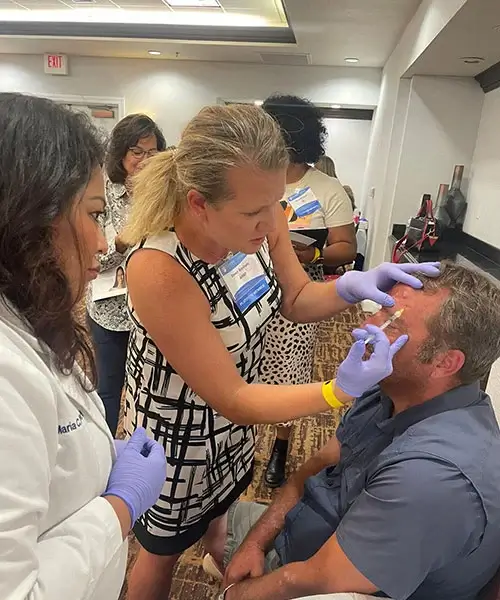Keloid Scar Treatment: What Works and What Doesn’t
By Dr. Stephen Cosentino
PRESIDENT OF EMPIRE MEDICAL TRAINING
A keloid scar is a raised scar that forms in the months after injury to the skin. Caused by collagen overproduction in the affected area, it slowly grows and darkens over time. Eventually, it can outgrow the original wound.
People with darker skin are at higher risk of developing keloid scars. True keloids are benign, but dermatologists recommend skin biopsies to rule out skin cancer and other potentially concerning conditions.
Unfortunately, keloid scars don’t go away on their own. But certain treatment options may reduce the size and discomfort associated with them, or even reduce the risk of developing them in the first place.
Keloid Scar Treatments That May Work
These treatments may be effective in treating keloid scars and their symptoms.
Topical Treatments (Silicone Gel and Topical Corticosteroids)
Depending on the formulation, you may be able to obtain these medications over the counter. Otherwise, a dermatologist can write you a prescription. The medication should be applied as directed, perhaps as often as twice daily.
Injected Steroids
This is an outpatient procedure that can reduce the size of keloid scars and associated discomfort. It works best on small keloids and may need to be repeated monthly.
Cryotherapy Treatment (Freezing the Scar)
Treatments like CryoShape can shrink or flatten keloid scars, at least temporarily. They must be administered by a medical professional.
Laser Treatment
Laser therapies, such as pulsed dye lasers, can also shrink or flatten keloid scars. Like cryotherapy, they must be supervised by a trained professional.
Low-Dose Radiation Therapy
Low-dose radiation therapy is yet another noninvasive option for shrinking and/or flattening keloid scars. But it can have significant side effects and may increase patients’ long-term cancer risk.
Keloid Scar Treatments That (Often) Don’t Work
These three keloid scar treatment options may work, but they’re either not as effective as the options above or there isn’t enough data to make a case either way.
Surgery Alone
Surgical removal is an effective fix for keloid scars — temporarily.
Unfortunately, surgery alone is less effective over the long term. The most promising clinical studies show a 45% to 50% recurrence rate after surgery alone. Others show even higher rates.
Given the relatively high cost of keloid scar surgery in comparison to other treatment methods, this isn’t the best option for most patients.
Naturopathic Remedies
Some people swear by home remedies like topical garlic or onion concentrate, but the medical evidence for these interventions simply isn’t there. Fortunately, patients can self-administer more effective treatments like silicone gel and topical corticosteroid cream.
Botox® Injections
Botox is one of several emerging treatments for keloid scar tissue. Early research suggests botulinum toxin type A can improve wound healing and arrest scar formation when administered early in the process, but more study is needed to assess its long-term efficacy.
Keloids vs. Hypertrophic Scars
Finally, a quick overview of the differences between keloid and hypertrophic scars:
- Hypertrophic scars tend to develop more quickly after injury, often within weeks
- Hypertrophic scars respond better to minimally invasive treatment
- Hypertrophic scars tend to blend into the skin better than keloids, which tend to be darker than the surrounding skin or “unnatural” in color (purple, deep red)
- Hypertrophic scars sometimes fade without treatment, while keloid scars tend to be permanent
As you can see, keloid scars are “worse” in the sense that they’re often more visible and can have more significant and durable quality-of-life impacts.


